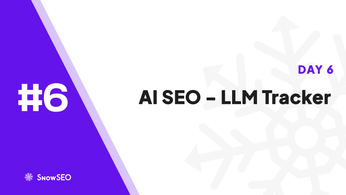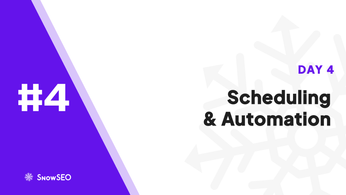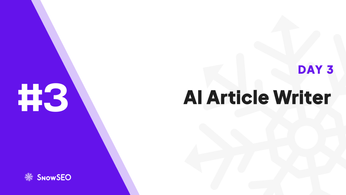
Ultimate Guide to Automatic Content Gap Fillers
Table of Contents
Unlock the potential of your content strategy with automated solutions. In an era where algorithms update faster than editorial calendars, every unaddressed query on your topic list is an invitation for competitors to outrank you. These invisible holes - known as content gaps - silently erode search visibility, dilute topical authority, and sabotage conversion funnels.
Manually tracking every emerging keyword, SERP feature, and user intent is no longer realistic. That’s why a new wave of AI powered platforms now scans billions of data points in minutes, pinpoints where your coverage is thin, and even drafts on-brand outlines ready for publishing. Instead of endless spreadsheets, you get a prioritized roadmap that turns gaps into revenue opportunities.
This guide walks you through the leading tools that automate the identification and filling of content gaps - from enterprise stalwarts like SEMrush and Ahrefs to predictive intelligence engines such as MarketMuse and Content Harmony. Endorsed by top content marketers and SEO experts worldwide, these solutions are transforming how high-growth teams dominate page one.
Use this roadmap to navigate straight to the insight you need, whether you are diagnosing thin content, comparing toolsets, or planning your next editorial sprint. Each bullet links directly to an in-depth section so you can skim or dive deep at your own pace without missing a strategic beat.
- Understanding Content Gaps – discover why gaps hurt rankings, the signals Google looks for, and how to surface hidden opportunities in your niche
- Top Content Gap Analysis Tools – side-by-side review of SEMrush, Ahrefs, Content Harmony, MarketMuse, and more, including pricing, AI features, and data freshness
- Benefits of Automating Content Gap Filling – explore time savings, scalability, improved topical authority, and the measurable lift in organic conversions reported by leading marketers
- How to Choose the Right Tool for Your Needs – step-by-step framework to match features, budget, and team workflow to the perfect platform
- Frequently Asked Questions – quick answers to the most common queries about methodology, metrics, and implementation challenges
- Conclusion – key takeaways, action checklist, and next steps to future-proof your content strategy
Understanding Content Gaps
A content gap is the silent space between what your audience is actively searching for and what your site actually offers. Spotting that silence - and filling it before competitors do - is the difference between ranking on page 1 and languishing in obscurity.
What Are Content Gaps?
Content gaps appear when:
- A keyword or question has no dedicated page or section on your site.
- Existing material lacks depth, data, or the latest perspective.
- The buyer journey is missing a crucial stage, forcing visitors to leave for answers elsewhere.
| Current Coverage | Missing Element | Opportunity Size |
|---|---|---|
| “Best laptop brands” list | In-depth gaming laptop guide | High search volume, low competition |
| How-to blog post | Video walkthrough | Rich-media preference, boosts dwell time |
| Product features page | Real user case studies | Builds trust, drives conversions |
Pro tip: Run your sitemap through content gap analysis software like SEMrush Topic Research or Ahrefs Content Gap to surface hidden misses in minutes.
Impact of Content Gaps
Leaving these holes unplugged does more than cost a ranking; it erodes brand authority and revenue:
- Lost Traffic
Visitors bounce to competitors who answer faster and better. - Weak Topical Authority
Search engines see fragmented coverage and downgrade relevance signals. - Stalled Conversions
Missing mid-funnel assets break the narrative that nudges readers toward trial or purchase. - Higher Ad Spend
Teams compensate with paid traffic that could have been free with complete organic content.
Bridging gaps early compounds results: more impressions feed more clicks, which reinforce authority, creating a positive flywheel your rivals struggle to slow.
Master the gaps, master the market.
Also Read: 2025’s Latest SEO & AI Techniques Revealed
Benefits of Automating Content Gap Filling
Automating the hunt for missing topics transforms content marketing from a guessing game into a data-driven system that quietly works while you sleep. Instead of combing through spreadsheets, advanced platforms like MarketMuse and Content Harmony surface untapped angles in minutes, allowing strategists to focus on storytelling rather than sifting through SERP rows.

Efficiency and Accuracy
- Speed that scales
- Automated crawlers analyze thousands of URLs in a single pass, cutting research time from days to hours.
- Teams reallocate the saved hours to creative brainstorming, campaign planning, or simply shipping more assets.
- Pinpoint precision
- Algorithms score topic relevance against real-time search intent, reducing human bias and ensuring every gap aligns with measurable demand.
- Consistent scoring standards mean junior writers get the same insights senior SEOs rely on.
- Resource optimization
- Budgets stretch further because software highlights high-value gaps first, preventing wasted spend on low-impact content.
- Clear priority lists improve cross-department collaboration, smoothing designer, writer, and SEO workflows.
Automating content gap analysis doesn’t just add convenience - it creates a repeatable competitive edge that compounds with every new article.
Also Read: Top 7 Content Generation Best Practices Revealed
How to Choose the Right Tool for Your Needs
Selecting the perfect automatic content gap filler can feel like speed-dating hundreds of SaaS dashboards. The secret? Slow down, zoom out, and evaluate each option against the goals that actually move the needle for your brand.

Key Considerations
| Criterion | Why It Matters | Ideal Indicator |
|---|---|---|
| Data Depth | More historical and SERP data uncovers hidden gaps other platforms miss | 2+ years of indexed SERP snapshots |
| Integration Stack | Seamless links to CMS, analytics, and email platforms save hours weekly | Native plugins or robust API |
| AI Transparency | Clear explanations of how recommendations are generated build trust | Model documentation and confidence scores |
| Learning Curve | Teams adopt faster when UI mirrors existing workflows | <2-hour onboarding time |
Pro tip: Match platform complexity to team maturity. A lean startup may drown in an enterprise interface, while a global publisher outgrows freemium tools within months.
Practical Tips for Decision Making
- Define success metrics before demos. Whether it’s organic traffic, content velocity, or conversion rate, numbers prevent shiny-object syndrome.
- Run a 14-day sandbox test. Load one existing article, apply the tool’s suggestions, and track improvements in click-through rate or dwell time.
- Compare cost to opportunity. If SEMrush saves one writer four hours a week, the subscription often pays for itself by month two.
- Seek social proof. Look for case studies endorsed by leading marketers or chat with peers in private Slack communities.
- Re-evaluate quarterly. Your choose content tool decision today might shift as algorithms and team sizes evolve.
Following these tool selection criteria ensures you invest in technology that scales with your ambitions rather than shackles them.
Ready to turn today’s insights into high-performing content that actually fills the gaps your competitors leave behind? SnowSEO (https://snowseo.com) was built for exactly this: an all-in-one AI-powered platform that pinpoints missing topics, generates human-grade articles on autopilot, and publishes them straight to your CMS. Instead of juggling separate tools, dashboards, and freelancers, you get a 24x7 SEO expert team-in-a-box that tracks rankings, brand mentions, and competitor moves while you sleep. It even surfaces fresh keyword opportunities the moment they appear in SERPs or AI answers, so your site claims authority first. If the Ultimate Guide convinced you that automated content gap filling is the fastest route to organic dominance, SnowSEO turns that theory into daily reality. Start by importing your domain, letting our algorithm audit existing posts, and watching it map out the highest-value gaps in minutes. Then launch an AI-optimized article, schedule automatic refreshes, and monitor real-time gains from a single dashboard. Ready to out-publish and out-rank the field? Explore pricing plans and start trials today.
Frequently Asked Questions
Q1: How do automatic content gap fillers actually identify missing topics?
Smart gap-filling tools mine your existing pages, competitor articles, and live search data to detect keyword clusters you haven’t covered yet. They then rank those gaps by traffic potential and topical relevance, so you know which ideas deserve priority. By combining natural-language processing with SERP scraping, the software surfaces subtopics, questions, and supporting sections your audience is already Googling, letting you expand posts methodically instead of guessing.
Q2: Will using these tools make my content sound robotic or over-optimized?
Not if you steer the wheel. Think of the tool as GPS, not autopilot. Feed it your brand tone guidelines, review every suggested heading, and weave in personal anecdotes or expert quotes. This human layer keeps copy vibrant while the algorithm ensures SEO alignment. The result is engaging prose that also satisfies search intent.
Q3: How often should I run a content gap analysis?
Quarterly works for most brands. Search behavior, competitor strategies, and Google’s algorithm all shift fast, so a 90-day cadence lets you refresh old posts, capture emerging queries, and avoid cannibalization. For news-heavy niches, monthly checkpoints add an extra competitive edge.
Conclusion
Automated content gap fillers have moved from nice-to-have gadgets to indispensable growth levers. In our deep dive, one theme surfaced repeatedly: machines excel at quickly mapping vast keyword universes, but the marketer still steers the ship.
Key Takeaways
- Automated tools enhance efficiency and accuracy, freeing hours for strategy instead of spreadsheet wrangling.
- Choosing the right tool is crucial; feature depth, data freshness, and integration with your current stack make or break ROI.
- Understanding your needs leads to better choices, because a journalist’s content gaps look very different from an ecommerce manager’s.
Call to Action
Explore pricing plans and start trials today to see how these platforms fit your workflow before you commit budget.
Next Steps
- Spin up a seven-day trial with SEMrush to experience automated topic clustering in a real campaign.
- Run Ahrefs’ Content Gap report on your top three competitors; review missing SERP features and shortlist quick-win articles.
- Share initial wins internally to secure long-term investment in your chosen platform.





